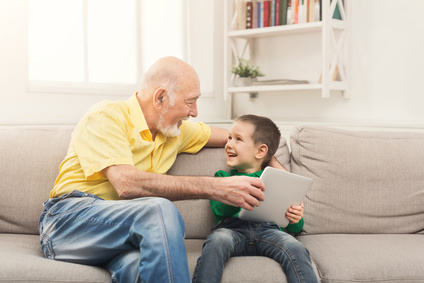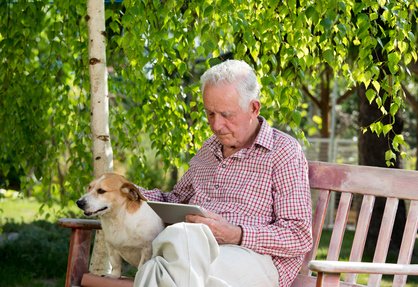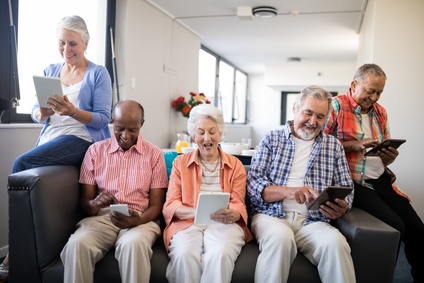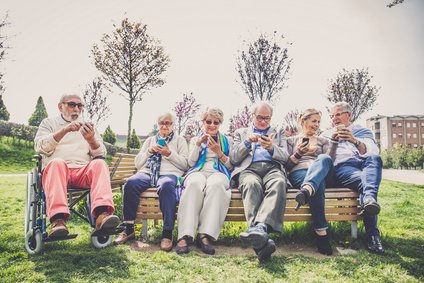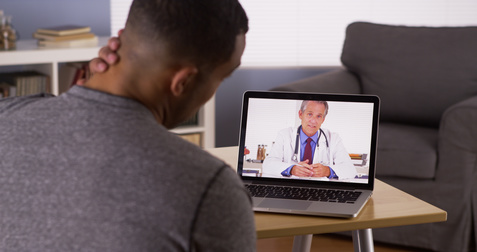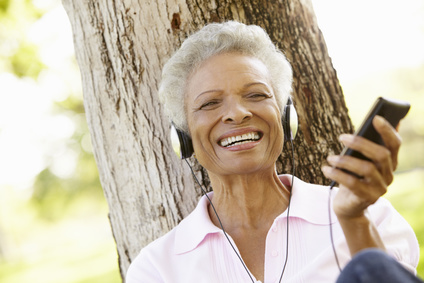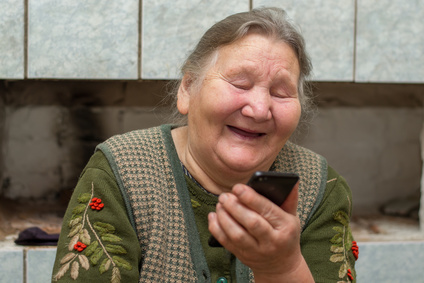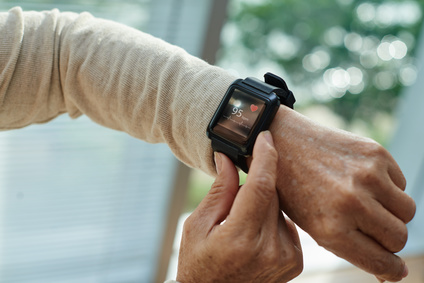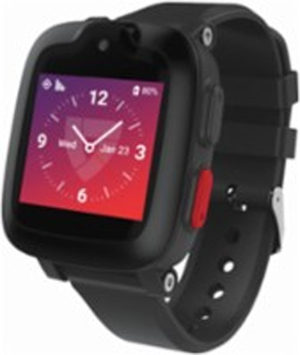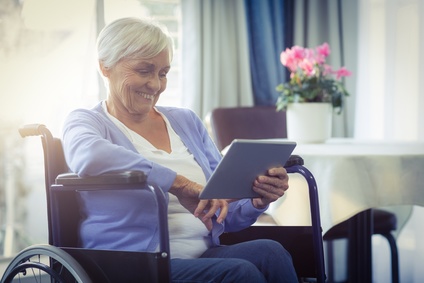SMART HOMES for SENIORS
Smart homes for seniors has become a topic of interest for many families, especially those who may not be able to afford professional care for their elderly relatives. Smart homes can contain technological gadgets to aid with vision, hearing, memory problems, and mobility, etc., all areas in which elderly persons in otherwise relatively good health could be able to live independently in their own homes much longer.
Seniors, those persons 65 years and older, now make up approximately 15% of our US population or almost 50 million citizens, and the number is growing. Smart homes for seniors can help to extend independent living until a home or clinic becomes the only option.
The technology used in smart homes for seniors can, in most cases, actually replace a nurse’s visits. Gadgets can monitor a senior’s health, remind them to take their medication, and respond to emergencies. While improving the life of a senior, the technology can also help other groups of people who may have one or more specific needs similar to that of an elderly person, such as vision, hearing, and mobility.
WHAT IS THE TECHNOLOGY BEHIND THE SMART HOMES FOR SENIORS?
The technology behind smart homes for seniors is a relatively new buzzword called ‘Io T’ or the Internet of Things. What is it? The Internet of Things is increased machine-to-machine communication built on cloud computing and networks of data-gathering sensors. It is basically the connection of machines and sensors.
But a machine is a just a tool and a sensor just gathers data. Unless there is an infrastructure to analyze the data in real time and transmit it to the machine, the data is useless. The answer is cloud-based applications used to interpret and transmit the data from the sensors to the machines. The Internet of Things makes gadgets and homes ‘smart.’
HOW IS ‘SMART’ TECHNOLOGY SPECIFICALLY DIFFERENT FOR SENIORS?
The ‘smart’ technology that must be made available for seniors has to take into account the inevitable health challenges a person faces as they age. Degrees of change in cognitive function, vision, hearing and small motor skills are some primary examples.
Therefore, the smart gadgets designed to be used by seniors should contain at least the following options:
- Should be able to respond to voice commands, even able to recognize indistinct speech.
- Should have extreme simplicity in design. For example, easily recognizable icons on physical devices, such as a pill for medication, a light bulb for lighting, etc.
- Should have buttons that are very large and significantly different in color to account for small motor problems that make it difficult to hit targets such as buttons on a device. They should also be easy to press, especially for those who suffer from arthritis.
- Should have a single control center. If something goes wrong, a lot of buttons or controls may confuse or scare some seniors.
- Should have any kind of abnormality or warning signal highlighted.
- Should have protection against error while avoiding the word ‘error’ since if an interaction fails, elderly persons may blame themselves for being clumsy and stop using the device.
- Should have protection against false calls. Rather than having the control system worn in a pocket, the devices should be able to be worn on the body, such as watches, bracelets and pendants.
- Should allow older people a choice of shape and design for their devices, so they can choose what they like.
- Should be durable enough to withstand accidental falls.
- Should have a long battery life. There should also be a way for the gadget to inform a person in advance that the battery needs charging or replacing, so that relatives of older people will have time to take care of it.
- Should have easy to read results collected by sensors, such as for blood pressure readings, and should have recommendations made available.
- Should have multi-language support as well. If an older person doesn’t speak English as their first language, there must be apps that support their native language.
The above recommendations are just the beginning. The ideal to strive for would be to test groups of older people with a range of different health problems and use their comments and concerns when designing gadgets.
WHAT KINDS OF DEVICES DO ELDERLY PEOPLE NEED?
The following is taken from an article written by Evgeniy Ilyenko, Project Head at CLAP Smart Home System, created in the Ukraine, and the first full-fledged smart home system.
The gadgets needed in a smart home for the elderly can be roughly classified into 4 groups.
Here are the basic ones:
HEALTH MONITORING
- Sensors worn near the heart, used to keep track of the heart rate, respiration rate, temperature, and pressure. In case of any abnormalities the sensors send messages to relatives and doctors. The data is sent to the smartphone and to the cloud, and the app gives recommendations on lifestyle modifications, or advises the user to see a doctor.
- Fall sensors and behavior sensors. 50% of people over 65 can’t get up if they fall down. Lying on the floor without being able to get up for a long time can cause many complications, and can lead to dehydration and even death. The sensor transmits a signal to the smart home control center that turns on the alarm. After that a person has 30 seconds to turn off the sound. If they aren’t able to do it, the information will be sent to the relatives and the rescue service, and the family can open the door remotely.
- Behavior sensors can track whether a person has gotten up and out of bed, and if they have opened the fridge. They can even detect changes in gait and report such changes to the relatives, helping to prevent a fall.
- Pill dispensers with compartments for each day of the week. The compartments start flashing lights and emitting alarms when it’s time to take medication. If the medication isn’t taken, the relatives can remotely check whether their loved ones are taking their pills.
SAFETY AT HOME AND OUTDOORS
- GPS trackers with an alarm button. An older person can press the button if they get lost or scared. The gadget will notify relatives with a link to the GPS tracker’s location on the online map.
- Window and door sensors. Open/Close sensors signal if a door or a window isn’t closed properly.
- Alarm and video surveillance systems. Cameras can also be placed inside the house, enabling relatives to remotely keep an eye on their elderly. Outdoor cameras can detect suspicious activity and the smart house reports on any potential danger.
- Doorbells for hearing-impaired people. They show who is behind the door, and transmit voice messages if the owner can’t open the door.
- Smoke, gas, and, humidity detectors. These devices notify owners of smoke, flooding, or gas leakages. Should the need arise, they can block water and gas and cut off electricity in the house.
APPLIANCE CONTROL AND HOUSEHOLD ASSISTANCE
- Control systems for lighting, heating, ventilation, and air-conditioning. With sensors collecting data about the temperature, humidity, and carbon monoxide concentration in the air, the system can automatically improve these parameters.
- Control systems for electrical appliances. A control system can help, for instance, make coffee in a coffee machine, or turn off the iron (the On/Off status of the appliances is displayed in the app).
- Smart pet care robots. The robots can be controlled remotely: they can feed animals and give them water, talk to them in their owner’s voice, play using a laser pointer.
RECREATION AND ENTERTAINMENT
- Audio and video systems. Can be used to turn on music and video in different rooms.
- Robotic assistants. Such devices can carry out conversations, make purchase, pick out a recipe, etc.
- Smart Digital Photo Frames. Standard digital photo frames might show the same photos for months as some people forget to upload new photos. Smart frames can be controlled remotely. Children and grandchildren can share their travel photos with their elderly by sending the photos directly to the device from their smartphones.
SENIOR SMART HOMES
SENIORS LIVING INDEPENDENTLY
Living independently as a senior in one’s own home can not only bring benefits to the quality of life of the senior but can also help to forestall the financial burden for the family imposed by assisted living and nursing homes. Thus, the most intensive care can be saved for the time, should it come, when even the smart home cannot fulfill all the needs of the elderly family member.
Top of Smart Homes for Seniors
"The Cleanest Clean You've Ever Seen."
by
ABC Oriental Rug & Carpet Cleaning Co.
130 Cecil Malone Drive Ithaca, NY 14850
607-272-1566
Please feel free to share this article...


